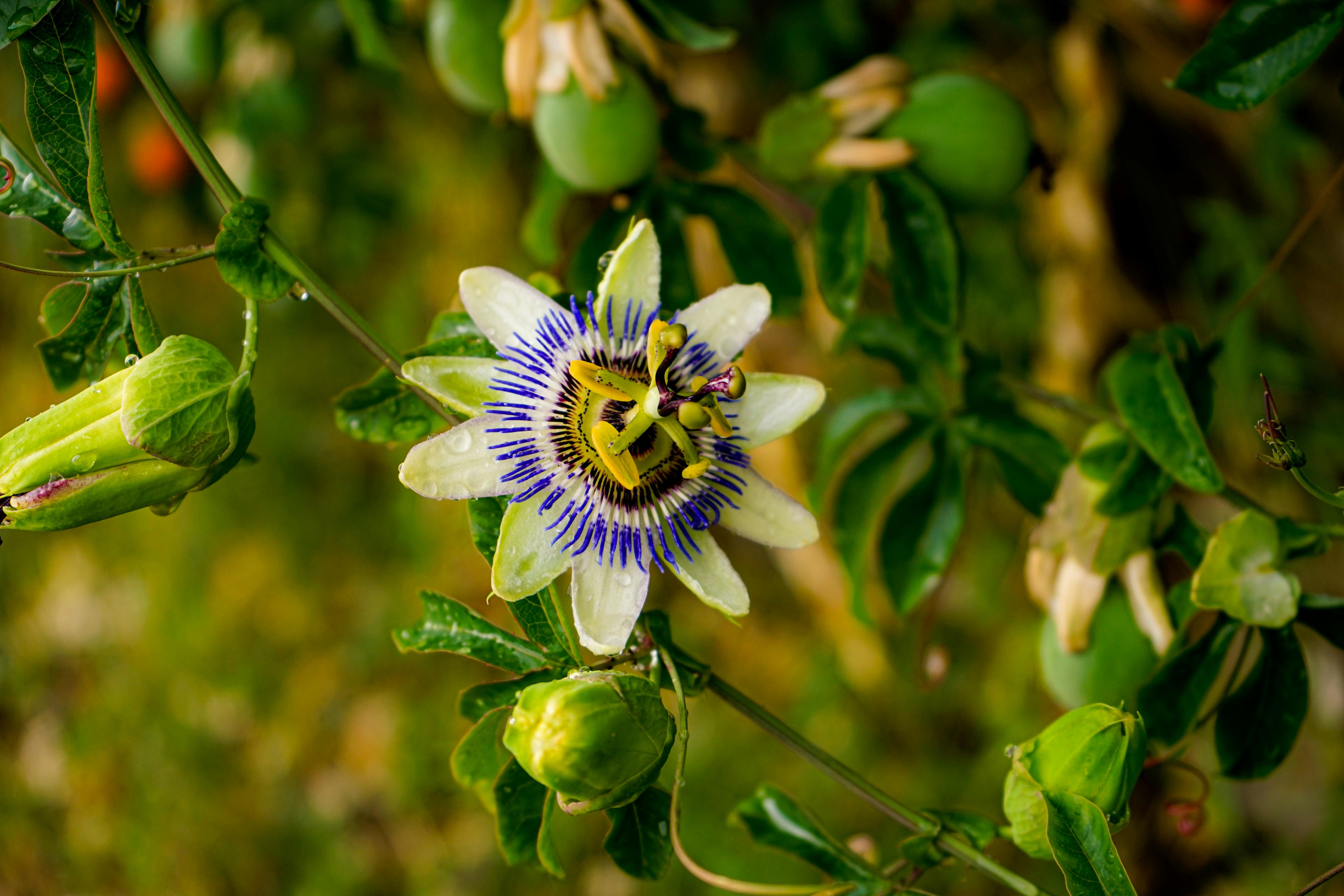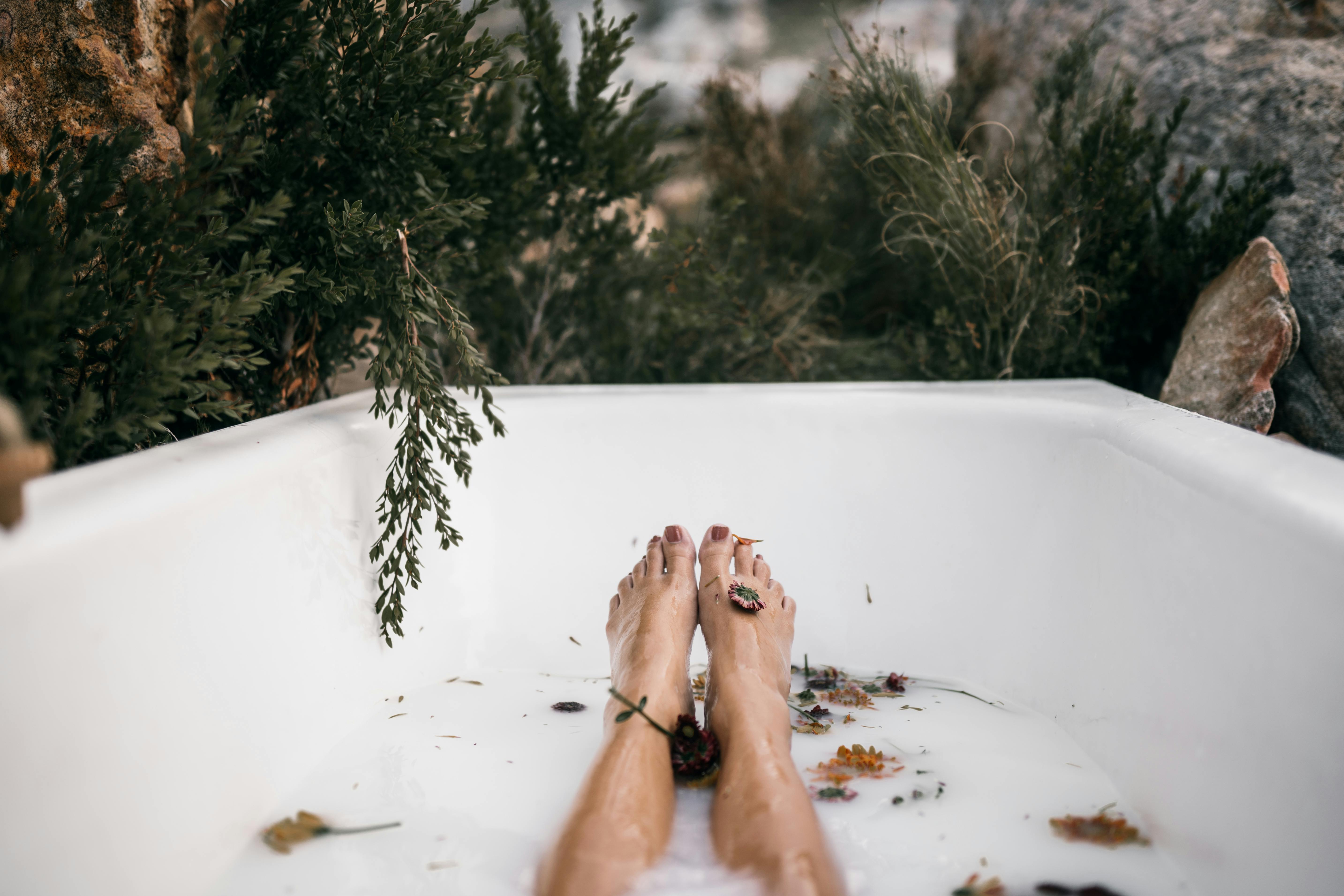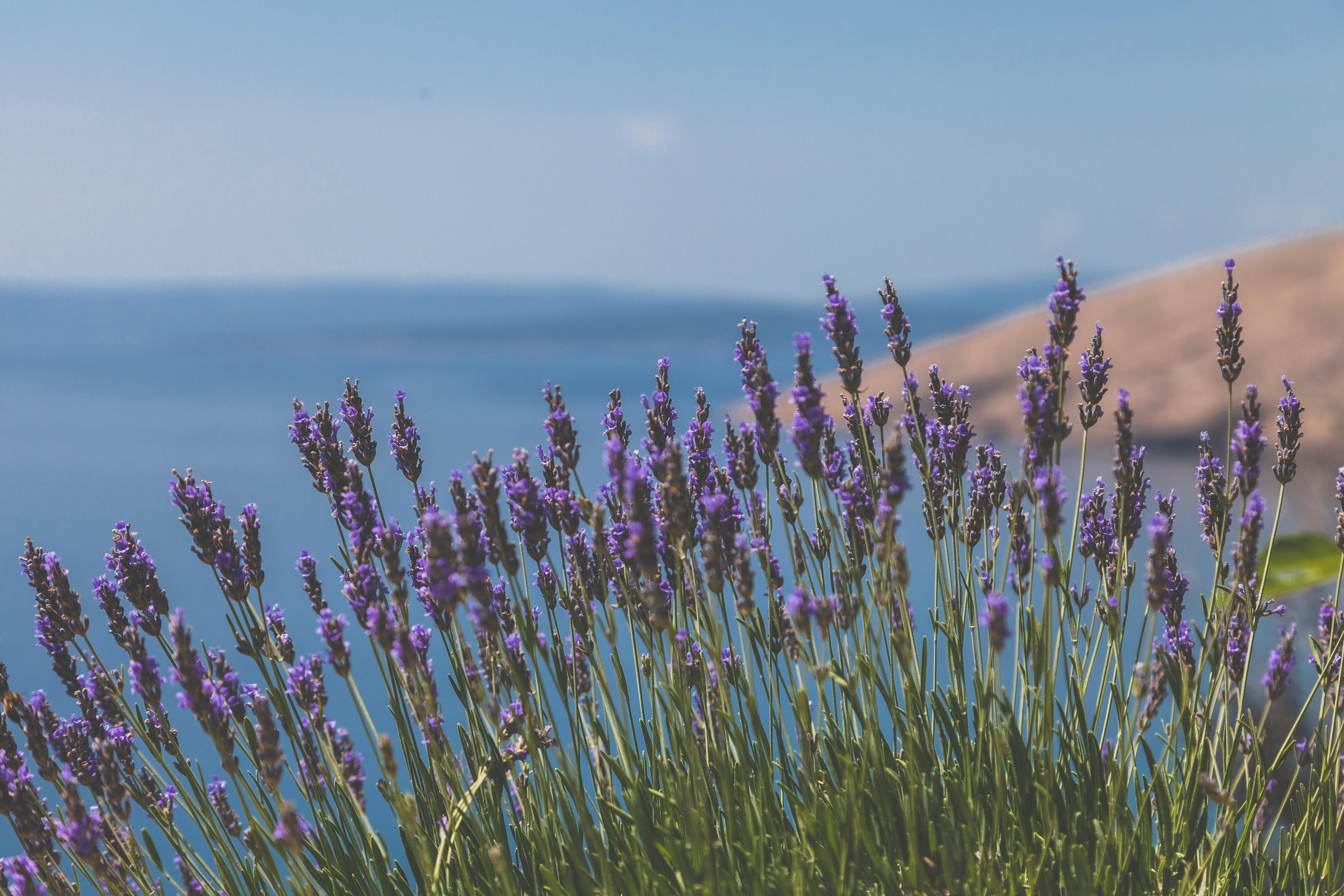When you apply your serum in the morning or your eye cream in the evening, do you ever pause to consider all the hands that played a role in bringing it to you? And deeper still, all the elements in nature that came together in perfect harmony to allow these ingredients to exist? The people from long ago who first discovered their properties and passed down the wisdom we now use to nurture our skin? From the food we eat and the air we breathe, to our skincare rituals, we are in a constant exchange with nature. May each spray of your hydrosol and every drop of oil you massage into your skin be a moment of gratitude for the earth and the ancient practices that guide us.
Back to Basics
Imagine receiving your skincare from a sterile factory: large machinery, no windows, workers in white bunny suits protected from harsh chemicals, and handling packages of herbs from who knows where. There’s little life or vibrancy there, is there? No touch of sunlight or the presence of living organisms. Now, picture a herbalist out in the woods, harvesting wild rose petals for your rose hydrosol—each petal kissed by the sun, serenaded by the passionate harvester. How do you think your body will receive each of these offerings? As humans, we evolved in nature, and when our products are as close to their natural state as possible, I believe our bodies respond to them more harmoniously. Just like fresh produce that has touched the soil, versus processed food sealed away, our bodies intuitively know the difference.
When you use products as close to nature as possible, the need for a dozen different steps and countless products fades away. There’s a level of wholeness in natural products that you won’t find in chemical-laden alternatives. One thing you won’t find in nature-based products is xenoestrogens—synthetic chemicals found in many conventional skincare products, household cleaners, processed foods, and even pharmaceuticals. These chemicals mimic the body's natural estrogen, binding to estrogen receptors and disrupting the endocrine system. This can lead to issues like infertility, endometriosis, and even hormone-related cancers just to name a few.
When working with women to balance their hormones, the first step is to remove endocrine-disrupting chemicals like xenoestrogens. Switching to natural skincare reduces your exposure to harmful substances and saves time and money. There are really only three essential steps for daily skincare, with occasional extras like face masks or steams for maintenance:
- Cleanse.
- Tone.
- Moisturize.
Thankfully, the earth has provided us with all the ingredients we need, and we’ve inherited the wisdom of ancient skincare routines for each step—cleanse, tone, and moisturize—which we’ll explore below!

Cleopatras Beauty Secrets
Cleopatra wasn’t just the queen of the Ptolemaic dynasty in Egypt—she was also a skincare trendsetter, with many of her beauty practices still in use today! From henna to goose fat, she embraced natural ingredients, but four stand out as enduring favorites: milk, honey, salt, and rosewater. She even authored a manual called Cosmetics to document her beauty rituals among other health practices.
Cleopatra was famously known to bathe in milk, specifically donkey’s milk, though any milk from mammals will do, as long as it contains lactic acid, which is produced through lactose fermentation. Milk is a versatile skincare powerhouse that covers all three steps—cleansing, toning, and moisturizing. Lactic acid gently exfoliates, unclogs pores, and softens the skin while improving texture and appearance. Today, you’ll find lactic acid added to many skincare products, but skip the additives and go straight to the source!
Honey, a sweet treat with immense medicinal value, was another favorite of Cleopatra’s. Known for its antibacterial properties, she used it mainly as a cleanser, though it also found its way into her milk baths. Honey is so effective that it’s used in wound care to cleanse and protect injuries. Its soothing and anti-inflammatory properties make it ideal for treating conditions like eczema and psoriasis. Adding honey to a face mask helps exfoliate and purify the skin.
Cleopatra adored roses and incorporated them into her beauty rituals in many ways—using rose oil to scent her body, adding it to her milk baths, and applying it as a toner. These timeless practices are still cherished today, with one of the most popular skincare applications being rose hydrosol. This fragrant mist is known for tightening pores, cooling the skin, reducing redness and puffiness, and providing hydration. Want in on this rose goodness? Check out our Hibiscus Hyaluronic Acid Serum infused with rose hydrosol and rose geranium essential oil!
Cleopatra also used sea salt as an exfoliant, a simple and effective method to slough off dead skin and leave your complexion soft and glowing. To recreate this ancient beauty ritual, just mix oil with salt (or sugar) and scrub for radiant, smooth skin.
Clay and Mud
Using clay and mud for healthy skin is a practice that ancient civilizations such as Egypt, Greece, India, and Rome all embraced. What’s unique about each of these cultures is that the type of clay they used varied depending on their region. For example, in Egypt, Cleopatra might have used Dead Sea clay, while in India, a type of clay called Multani Mitti, or Fuller’s Earth, would have been favored. Clays are excellent at removing impurities as they cleanse, detoxify, and exfoliate the skin, while their mineral richness nourishes and revitalizes. Though each clay varies, they are all astrignet helping to tighten the skin, close pores, and reduce blackheads. For centuries, they’ve also been used to treat more serious skin conditions, protecting the skin and healing wounds. So next time you find yourself by a stream, try applying some mineral-rich clay to your skin—it’s not only nourishing but also a wonderfully grounding practice! Check out our blog on the different types of clays and how to make your own herbal clay mask or check out our ready to use herbal masks!
Ayurvedic Skincare
We can also draw wisdom from Ayurveda, the 5,000-year-old Indian medical system, for skincare practices. In Ayurveda, treatments are tailored to an individual's dosha, or constitution—Vata, Pitta, and Kapha. In short, Vata types tend to have drier, rougher skin and may need extra moisturizing. Pitta types, with their oily, warm skin, are more prone to acne and may benefit from cooling agents. Kapha types, typically cold and oily, often require circulation-boosting exfoliation. Once you know your dosha and skin type, you can customize your skincare routine accordingly. Here are two popular Ayurvedic skincare practices we can incorporate into our own rituals.
Abhyanga
Abhyanga is the practice of self-massage with warm oils, starting from the head and moving down to the feet. Another term for this is snehana, which means "to love" or "to nurture"—a fitting description, as self-massage is one of the deepest expressions of self-love. By tending to each part of your body, you nourish more than just your physical self. The practice also hydrates the skin, relieves stress and muscle tension, and improves circulation by stimulating blood and lymph flow, all of which contribute to healthier-looking skin. For Vata, a heavier oil like sesame is recommended; for Pitta, a neutral oil like ghee works best; and for Kapha, a lighter oil like safflower is ideal.
Ubtan
Ubtan is a traditional beauty paste made from natural ingredients like chickpea flour, turmeric, sandalwood, rose water, and milk or yogurt. It can be applied to the face and neck, much like a face mask, or used on the entire body during a traditional Ayurvedic massage called Udvartana. In Hindu and Muslim weddings, Ubtan is used during the haldi ceremony to bless and purify the bride and groom. Turmeric, a key ingredient, helps reduce inflammation, brighten the skin, protect against damage, and even out pigmentation. Chickpea flour serves as a gentle exfoliant. Rose water and dairy cool the skin and reduce redness. Together, these ingredients create a powerful skin tonic that cleanses and beautifies. While most Ubtan recipes are tridoshic (suitable for all constitutions), they can be customized to suit your specific dosha.
Sauna
Another important Ayurvedic practice, often used to prepare for other therapies, is Swedana, which means "to sweat." This herbal steam therapy is designed to detoxify the body through sweating. There are five different types of Swedana, each with varying methods, but the core goal is the same: to open the pores, release toxins, relieve stress, and ease muscle tension and stiffness. The result? Glowing inside and out.
Ayurveda isn't the only culture that recognizes the health benefits of sweating. In fact, traditions of sauna and sweat therapy are found in many cultures, including those of Finland, Iceland, Japan, Central America, North America, Scandinavia, Turkey, and Russia, all of which use sweating as a practice for physical and spiritual well-being.
The good news is that even if you don’t have access to a sauna, onsen, or similar facilities, you can still enjoy the benefits of sweating by simply moving your body. Sweating helps to clear out buildup in your pores and release toxins stored in your body. So, at the very least, go for a walk, get your heart rate up, and sweat it out—for the sake of your skin!
Fats
Until recently, plant and seed oils weren’t as widely available, and before their rise in popularity, animal fats were a staple in skincare. From Ancient Egypt to Ancient Greece—and even your grandparents—animal fats were commonly used in cosmetics, medicinal applications, cooking, candle making, and soap production. While the advent of plant oils led to a decline in their use, animal fats, particularly tallow, are making a comeback as their numerous benefits are being rediscovered.
Tallow, typically sourced from grass-fed cattle but also from sheep, deer, and other animals, is rendered from the suet (the fat around the animal's organs) through a process of boiling, rendering, and purifying. What makes animal fat particularly beneficial for the skin is that its lipid composition closely resembles our own skin's sebum, allowing it to penetrate and absorb like no other oil. It also contains conjugated linoleic acid (CLA), which deeply hydrates and regenerates skin cells. Additionally, tallow is rich in essential nutrients like vitamins A, D, E, and K, which nourish the skin. Medicinally, tallow acts as both a protective barrier and a medium for delivering herbs deeper into the skin.
For those who prefer not to use animal products, that’s perfectly okay! Plant-based oils like olive oil, coconut oil, and rosehip oil are fantastic alternatives, offering many benefits of their own.
Aloe
We all know aloe for soothing sunburns after a bit too much fun in the sun, but its use extends far beyond modern-day burn remedies. Aloe vera has a rich history in skincare and medicine, dating back to the Mayan and Aztec cultures, where it was revered for both beauty and healing. It was also widely used by the Egyptians, Greeks, Romans, Chinese, and in Indian Ayurvedic practices. However, the aloe they relied on was pure and potent—quite different from the aloe products commonly found on store shelves today, which are often filled with preservatives and alcohol. When seeking aloe for your skin, always opt for 100% pure aloe vera gel, or better yet, get yourself an aloe plant!
Aloe vera is incredibly cooling and anti-inflammatory, making it ideal for soothing red, itchy, or hot skin. It’s a natural healer for wounds, scrapes, insect bites, and burns due to its ability to reduce inflammation and accelerate tissue regeneration. Aloe vera stimulates fibroblasts, the cells responsible for producing collagen, which enhances skin elasticity and reduces fine lines and wrinkles. It also contains amino acids that soften and rejuvenate the skin, making it a powerful ally in maintaining a youthful glow. Whether used as a first-aid remedy or a daily beauty treatment, aloe vera is a time-tested natural solution for healthier, more vibrant skin. You can find pure aloe in our Hibiscus Hyaluronic Acid Serum!

Full-Circle
Whether ancient cultures relied on honey, turmeric, aloe, or animal fats for their skincare, they all recognized another crucial element to any routine—the food we eat and our daily lifestyle. True skincare begins from within, as what we see on the outside often reflects our internal environment. Although we face challenges today that ancient cultures didn’t—like environmental toxins overwhelming our systems—there is still much we can control, particularly the foods we nourish our bodies with. No holistic skincare routine is complete without mindfulness of what we consume and how we live. So, let’s take a WHOLE-istic approach, nurturing ourselves from the inside out for radiant, vibrant skin!













Leave a comment